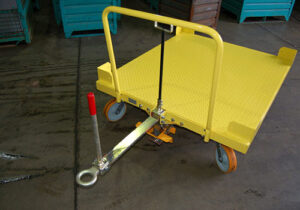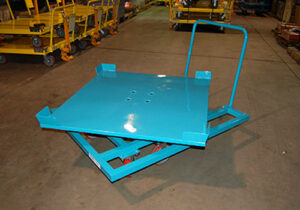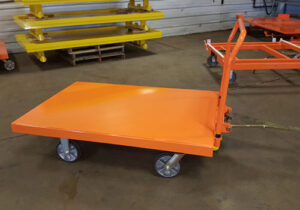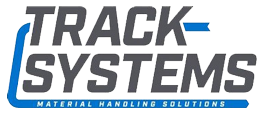Flatbed Carts Vastly Improve Material Handling Company Workflows
One of the simplest tools that are used in a warehouse are flatbed carts, and while it may seem unnecessary to talk about such seemingly simplistic tools, they are so commonly overlooked and under utilized, or even misused we thought this list was necessary.
What are Flatbed Carts?
Flatbed carts are basically a trolley with a utilitarian flattop, they often will also come with tie down points. While many will have a handle around hip hight some could be higher or lower. Flatbeds will often have swivel wheels that make moving them easier. It’s not just about investing in flatbed carts for your material handling application, however, you need to know how to use this tool properly so it serves its purpose. Follow these tips when using flatbeds for best results.



- Identify the type of flatbed you need: Not all carts are made the same. The size, handle arrangement, wheels, and even material construction all will impact their capacity and longevity in your application. Considerations to tie downs or tow bars for a tugger will be important to specify before a proper fit could be created.
- Mark and clear all Pathways: Flatbed carts work most efficiently on clean and flat surfaces. Make sure you plan a path that can accommodate the design of your carts turning radius and maneuvers it needs to make on its journey. Clearly marking their path with painted lines or industrial safety tape will help ensure these pathways stay extra clean and free of objects.
- Entry ways, Exits, and Spaces: With most floor plans you will need to use elevators, enter or exit the shop floor, or even load transport vehicles. Careful measurements will help ensure the safety of the loads and operators. Modification to the facility or creating a custom flatbed cart could be needed to improve safety and minimize load damage.
- Ensuring load capacity safety limits: This might sound confusing as the cart will already have a load limit (say 2,500lbs) but keeping track of load can be challenging without scales or even slow down training of new employees. Simplifying the load limits to a number of boxes or products will make it easier to visually check weight capacity limits. Doing this will help get the most life out of your flatbed cart.
- Label your flatbeds: You will most likely have more than one flatbed and keeping track of them can be challenging. We recommend keeping a sticker on them with basic information such as service dates, repairs, date of acquisition, and department responsible for the cart. Proper labelling ensures that the corresponding flatbed is available when it is needed.
- Train your operators: It’s not best to assume everyone will know how to use the flatbed cart. Most accidents that happen on the floor are due to a lack of training or lack of following proper procedures. We suggest having trainers instruct, then inspect each worker to make sure they have learned how to properly use the flatbed. Effective training and can help reduce damage to material and carts, increase life expectancy of the cart, and even increase productivity on the floor.
If you have any question about this, or any other cart topic please don’t hesitate to contact us. Engineering design and product development are the foundations of Track Systems business. When our team engages in a new project, the objective is to identify the best possible solution. Where standard products apply, we will so advise. Alternatively, customization may be appropriate if we encounter a unique application and we will recommend a specialty product to meet your needs.
